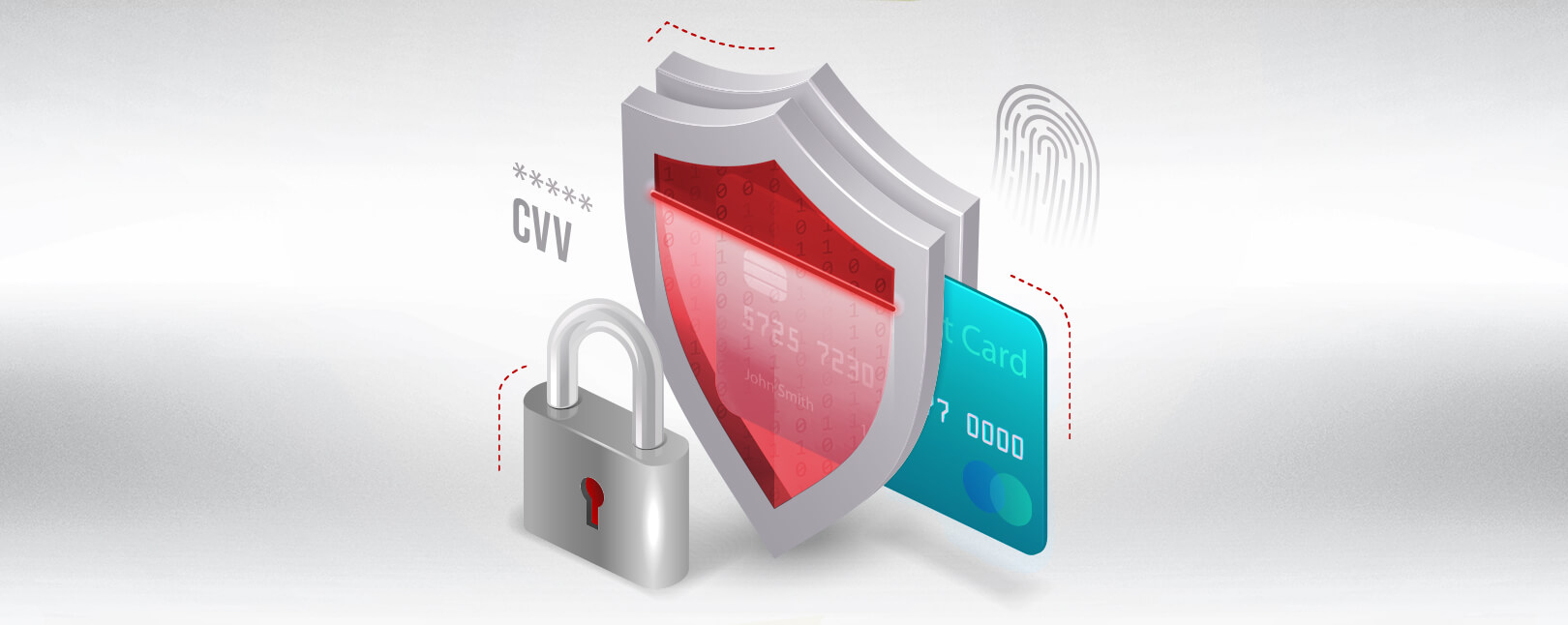Fraud Filters: The Merchant’s Guide to Building a Better Fraud Prevention Strategy
Wouldn’t it be great if you could spot fraudsters before they robbed you blind?
Well, we have good news: there are a lot of methods you can deploy to identify and reject fraudulent transactions. But, as practical as fraud filters can be, they are often mistargeted or underutilized. As a result, legitimate transactions get flagged and rejected, while fraudsters get by unnoticed.
This article will discuss what fraud filters are and how they work. We’ll also explore how effective they are, and look at why you may need more protection in the long run.
Recommended reading
- The Top 10 Fraud Detection Tools You Need to Have in 2025
- Reverse Email Lookup: Tips, Tools & How to Detect Fraud
- ECI Indicators: How to Understand 3DS Response Codes
- How Device Fingerprinting Works: Use Cases, Trends & More
- CVV2: How it Works | Rules & What Comes Next
- How to Detect Fraud: Top 20 Tips to Stop eCommerce Scams
What are Fraud Filters?
- Fraud Filter
A fraud filter is any technology designed to analyze transaction data and flag commonly-recognized signs of fraud. These fraud tools are designed to warn users of potentially fraudulent transactions, letting users stop and reject untrustworthy transactions.
[noun]/* frôd • fil • tər/
Fraud is an unfortunate reality of the card-not-present space. As a merchant, you want to catch fraudsters in the act, rather than deal with the consequences of a successful attack (revenue loss, consumer disputes, and chargebacks).
Fraud filters help weed out fraudulent transactions before or during checkout. They do this by setting stringent verification criteria for each transaction, and identifying transactions that don’t meet those criteria. In effect, a fraud filter can be any technology designed to analyze transaction data and flag commonly-recognized signs of fraud.
For example, let’s say an individual is trying to pay for an item online. They may be asked to type in several card-identifying details to verify they have said card in hand, or identify themselves through other means. If the customer cannot identify themselves or verify their card details, the transaction may automatically be voided.
Common Fraud Filter Parameters
There is no such thing as a “foolproof” fraud prevention tool. However, you can drastically reduce your exposure by implementing multiple fraud solutions that complement each other.
On that note, there are many methods merchants can use to block potentially fraudulent transactions. You have a wide array of fraud filters to choose from:
Any one of these fraud filters can be a fairly powerful tool on its own to help you identify risky transactions before they are approved. However, to get the most out of them, it’s a good idea to use more than one tool at the same time. These tools should also be backed by fraud scoring.
The Benefits of Fraud Filters
Fraud filters can be highly beneficial to merchants in many ways.
There is simply no overstating the importance of limiting your overall fraud risk. Stopping scams in their tracks is a crucial benefit that keeps you and your customers safe from exposure. There are other benefits to consider as well, though.
Data analytics can effectively pinpoint what prevention tools are working. It can tell you which fraud tools are optimized for your business and which are complicating matters. Analyzing your data can help you identify your weaknesses. It also tells you which tools work best, and which need adjustments.
Pre-transaction fraud prevention is just one part of a broader chargeback strategy.
Learn more here.

Fraud filters function best when they are tailored to each merchant’s needs. As a result, fraud filters are highly customizable, adaptive, and entirely optional.
For example, let's say you cater to a lot of travelers. You might find that geolocation is not especially helpful based on the specifics of the business. So, you may weigh that indicator less heavily compared to CVV and 3DS 2.0 technology when scoring customers at checkout.
How Effective are Fraud Filters?
To be blunt: as a merchant, you should be using fraud filters.
Like we mentioned above, there is no magic fraud detection tool that can eliminate 100% of fraud. Still, tools like fraud scoring and velocity checking, when used effectively, can go a long way to reducing your fraud risk by preventing many incidents before they occur.
U.S. eCommerce merchants have reported a 34.4% increase in the cost of fraud and a 140% increase in fraud attacks since 2020. However, merchants who invest in best-practice, multi-layered solutions integrated with cybersecurity and digital operations experience a 71% lower volume of successful fraud attacks. They also see 12% lower overall fraud costs of fraud.
Why? Because they’ve started using fraud filters.
These figures hint that fraud tools, when used correctly, are pretty effective at reducing merchant risk and exposure to fraud. That isn’t to say that they are effective all the time or that they won’t work too well in some cases, though.
The Downside of Fraud Filters
Reliance on poorly calibrated fraud filters can mean that you get a lot of false positives.
This means you might inadvertently reject a lot of orders that you shouldn't. After all, no one likes to be accused of wrongdoing, especially when no wrongs have been committed. Falsely flagging customers during legitimate transactions is a bad look, no matter how it happens. Customers who are put through this inconvenience are far less likely to return to your shop in the future.
10% of eCommerce transactions, on average, get declined. When this happens, nearly half of shoppers will abandon their cart, resulting in lost sales for the merchant and potential further revenue loss in the future. 33% of false declines discourage customers from retrying the purchase once the transaction has been rejected.
At the same time, miscalibrated fraud filters can mean letting genuine fraud attacks slip by unnoticed.
Remember: Machine learning tools base their decisions on past decisions. Your data gets more and more inaccurate over time, leading to more false positives and more fraud.
Other Problems With Fraud Filters
Unfortunately, you can’t prevent every case of fraud. As fast as solutions are developed, the bad guys come up with new ways to crack them. Fraudsters are constantly looking for methods to manipulate the system and slide by undetected. If you’re not keeping up…then neither are your fraud filters.
It should also be noted that no fraud filter is fully effective on its own. Cybercriminals have already worked out ways to get around each one of them. To get the maximum benefits from fraud filters, they must be used in tandem with one or more of the others. A criminal may have a way to defeat AVS and CVV, but if you use 3DS 2.0 as well, they will be less equipped to trick all three at once.
That said, fraud filters are only effective against acts of third-party fraud. There are many forms of fraud that they have little to no effect against, such as affiliate fraud, business email compromise scams, or friendly fraud.
You can’t solely rely on friendly fraud to keep your business safe. Instead, you should employ fraud filters as one piece of a greater fraud prevention strategy.
Fraud Filters Require the Right Strategy
Like we said, fraud filters are essential tools that work best in tandem with one another. They need to be integrated into a broader fraud and chargeback prevention strategy. Here are a few tips to get you started:
#1 | Optimize Fraud Tools
The more fraud filters you use, the better protected your business is against criminal fraud. However, be aware that overdoing it can backfire too. The best advice we have here is to take inventory of your business, analyze your data closely, and identify your needs in comparison with your weaknesses.
Don’t have access to this information? Then it’s time to add internal analysis to your list of needs.
#2 | Best Practices Win
No one is perfect. Every business is run by humans and is, therefore, prone to error. This is true no matter how slick your fraud management systems might be.
Your best bet to prevent disputes and swiftly identify fraud is to examine your business policies and practices to single out trigger points that could be leading to fraud and chargebacks. Adopt best practices to eliminate potential triggers.
#3 | Perform ‘Red Flag’ Reviews
Software must be updated for a reason. If merchants neglect updates, they risk data breaches, damaging software glitches, and other easily-addressed complications that could be prevented.
#4 | Fight Back Against Chargeback Abuse
Fraud filters and are meant to identify situations where a card is being used suspiciously. These technologies have no way to know if a given transaction will turn out to be friendly fraud later, though. On top of that, the fraudster is the actual cardholder, who may be a long-time, trusted customer.
Friendly fraud now accounts for nearly 60% of all chargebacks. Knowing what chargeback abuse looks like and how to respond can be tricky. However, ignoring the problem only allows it to get worse for everyone.
#5 | Know When You Need Help
A good strategy must use fraud filters to prevent criminal fraud and aim to limit intentional and unintentional post-transactional fraud. It also needs to tackle criminal and affiliate fraud and should include plans to relentlessly fight back against bad chargebacks and recover revenue.
Can your fraud prevention strategy do all that?
Chargebacks911® works closely with your team to create a comprehensive strategy customized for your business. Best of all, it’s backed by the industry’s only performance-based ROI guarantee.
A better solution for fraud prevention is at your fingertips. Contact us today to learn more about how we can optimize your fraud management efforts.













